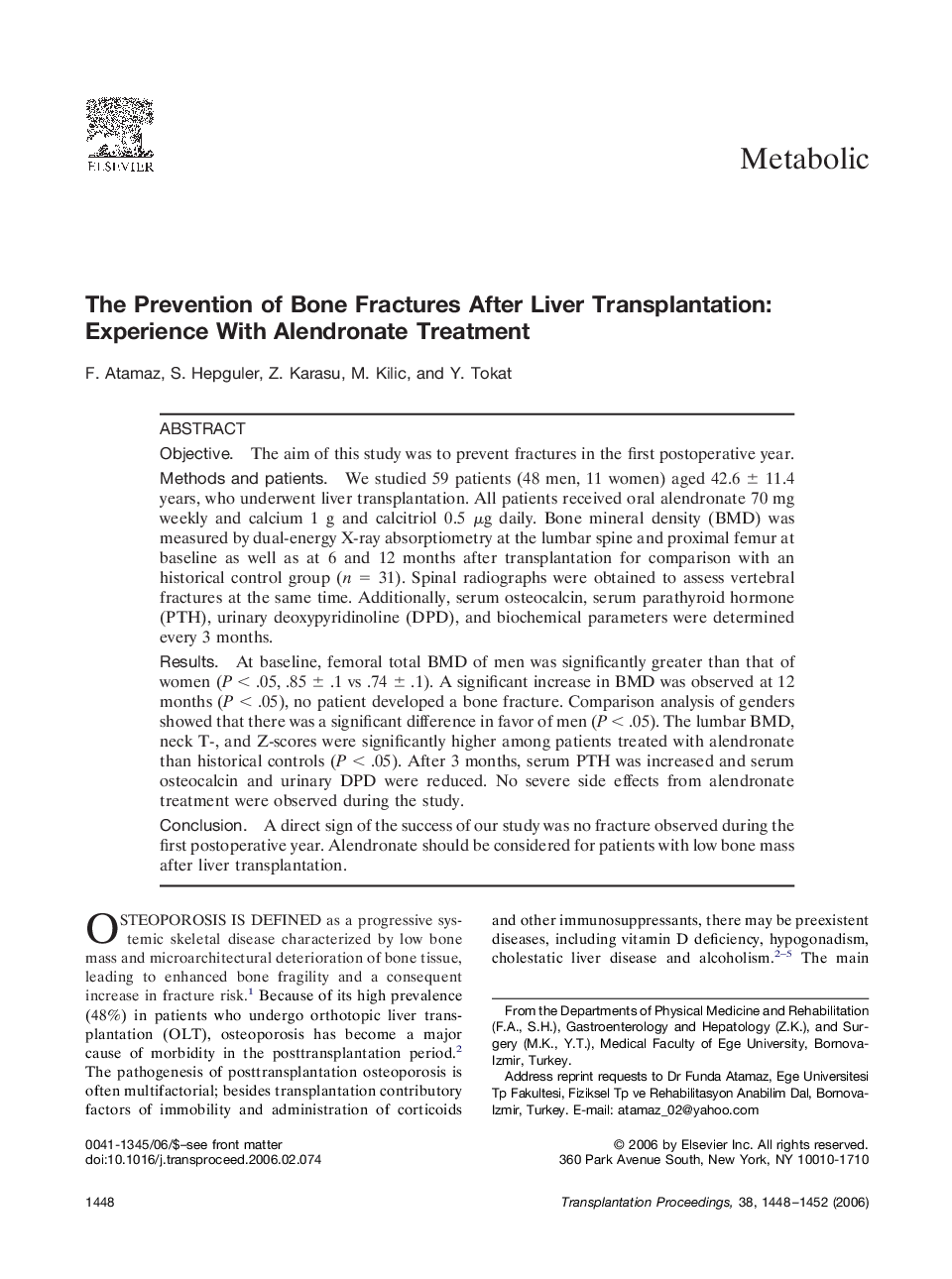| Article ID | Journal | Published Year | Pages | File Type |
|---|---|---|---|---|
| 4263462 | Transplantation Proceedings | 2006 | 5 Pages |
ObjectiveThe aim of this study was to prevent fractures in the first postoperative year.Methods and patientsWe studied 59 patients (48 men, 11 women) aged 42.6 ± 11.4 years, who underwent liver transplantation. All patients received oral alendronate 70 mg weekly and calcium 1 g and calcitriol 0.5 μg daily. Bone mineral density (BMD) was measured by dual-energy X-ray absorptiometry at the lumbar spine and proximal femur at baseline as well as at 6 and 12 months after transplantation for comparison with an historical control group (n = 31). Spinal radiographs were obtained to assess vertebral fractures at the same time. Additionally, serum osteocalcin, serum parathyroid hormone (PTH), urinary deoxypyridinoline (DPD), and biochemical parameters were determined every 3 months.ResultsAt baseline, femoral total BMD of men was significantly greater than that of women (P < .05, .85 ± .1 vs .74 ± .1). A significant increase in BMD was observed at 12 months (P < .05), no patient developed a bone fracture. Comparison analysis of genders showed that there was a significant difference in favor of men (P < .05). The lumbar BMD, neck T-, and Z-scores were significantly higher among patients treated with alendronate than historical controls (P < .05). After 3 months, serum PTH was increased and serum osteocalcin and urinary DPD were reduced. No severe side effects from alendronate treatment were observed during the study.ConclusionA direct sign of the success of our study was no fracture observed during the first postoperative year. Alendronate should be considered for patients with low bone mass after liver transplantation.
